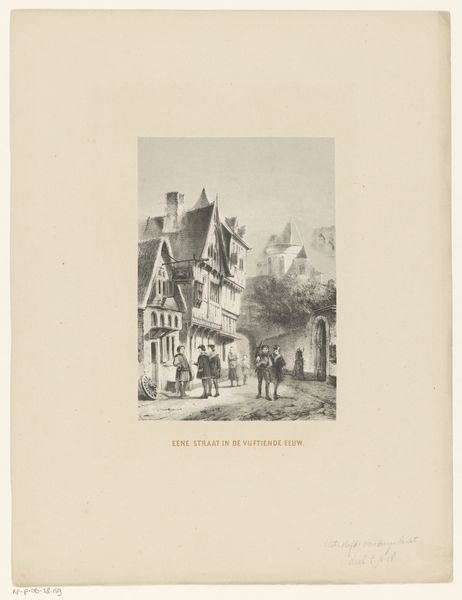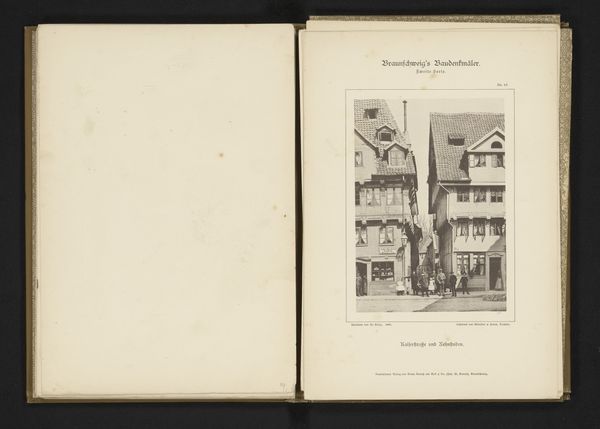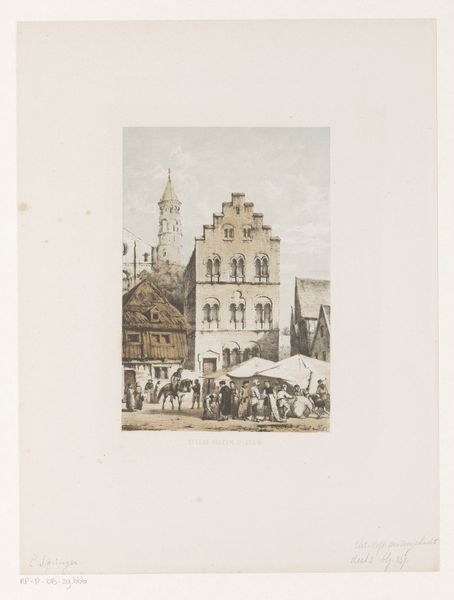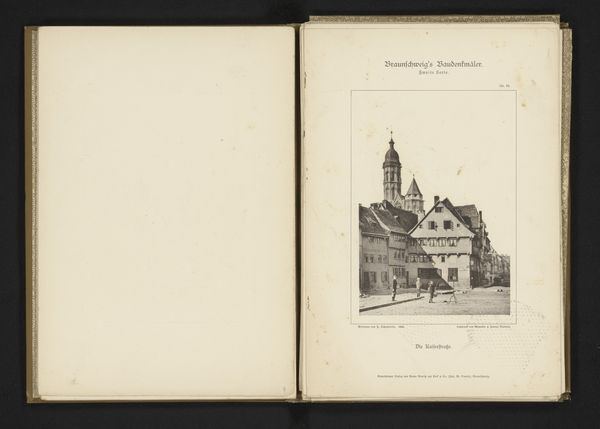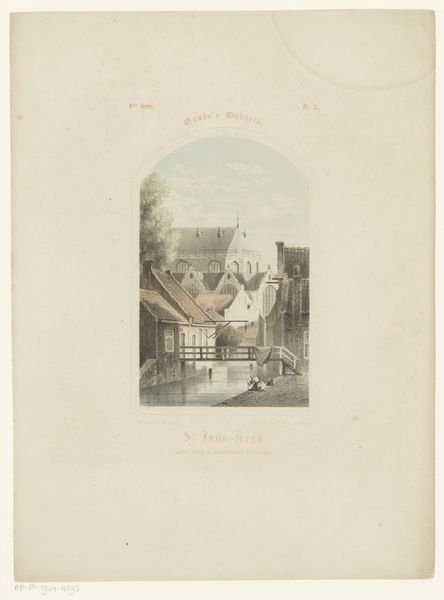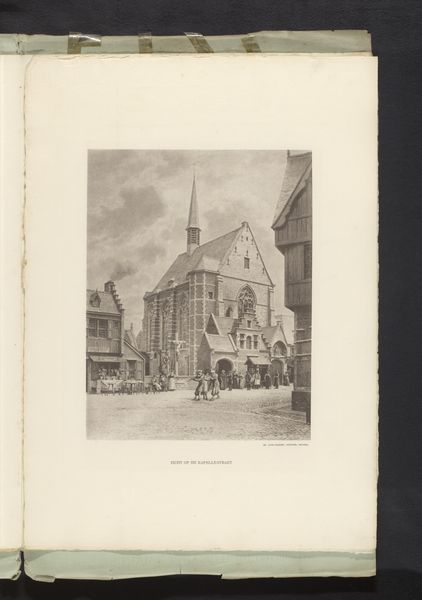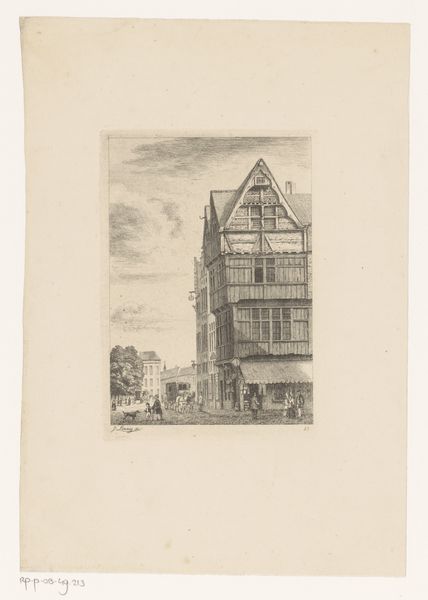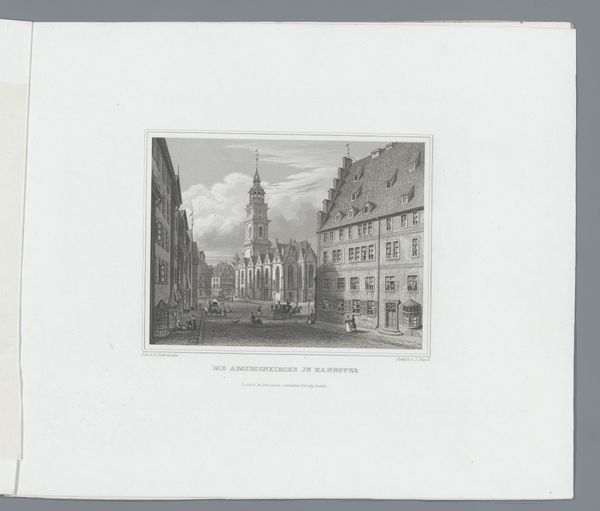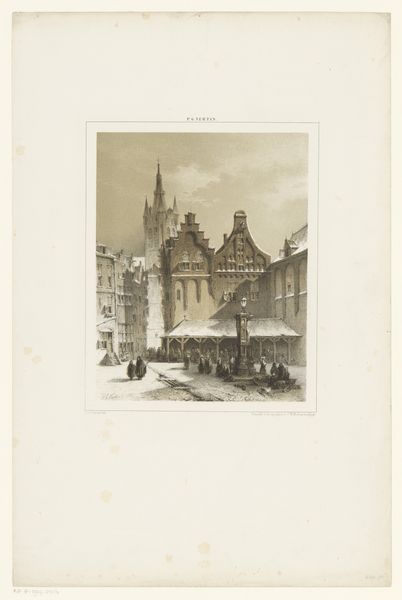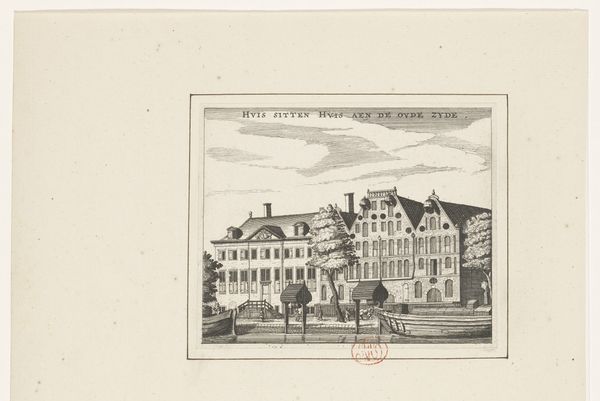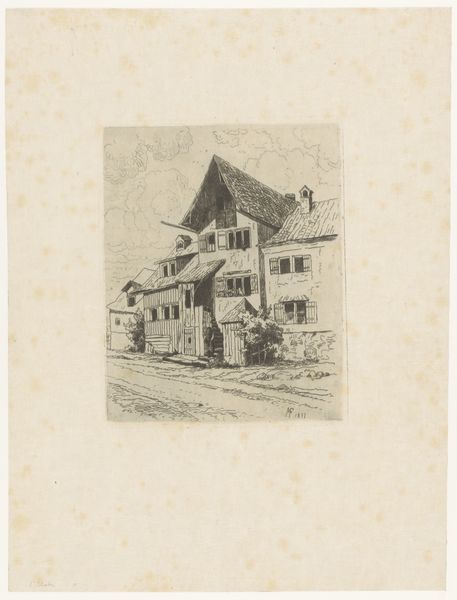
print, etching
# print
#
etching
#
landscape
#
romanticism
#
cityscape
Dimensions: height 257 mm, width 210 mm
Copyright: Rijks Museum: Open Domain
Editor: We're looking at "Stadsgezicht," a cityscape by Théodore Fourmois, an etching print from around 1825 to 1827, currently held at the Rijksmuseum. It feels very...balanced, yet somewhat distant, because of the level of detail in the architecture but the limited grayscale palette. How would you interpret this work, focusing on its form and technique? Curator: Let us consider first the articulation of space through the interplay of light and shadow. Observe how Fourmois uses delicate lines to define the architectural forms, creating a textured surface. This controlled deployment of the etching technique establishes a clear formal structure that dictates the visual hierarchy. The tonal gradations also generate depth and atmospheric perspective, pulling the eye across the pictorial space. Do you see how the strategic deployment of shadow accentuates the linear qualities inherent in the medium, contributing to an overall feeling of precise delineation? Editor: Yes, I see that now, especially in the detailing of the buildings! It almost feels like a mathematical rendering in its precision. But doesn't this formal focus also risk overlooking other potential meanings? Curator: It is imperative that we recognize how the materiality of the etching medium and the formal structure intertwine to create the aesthetic effect. This visual dynamic invites an inquiry into the artwork as an object constituted of its unique elements. Any external influences can be secondary to this fundamental understanding. Does the artist not consciously decide these arrangements for us to consider their relationship, before cultural context can even occur? Editor: I think I’m starting to understand. It's about really *seeing* how the artist built the piece, how it holds itself together. Curator: Precisely. This appreciation sharpens our capacity to recognize compositional techniques, and subsequently to delve deeper into their impact on our visual cognition. By appreciating structure and form, we gain insight to the artist's method itself. Editor: Thank you. Looking at it that way, the city emerges differently. I notice so much more now, the arrangement of the volumes, and the density created through hatching, I am understanding a language I had missed before.
Comments
No comments
Be the first to comment and join the conversation on the ultimate creative platform.
